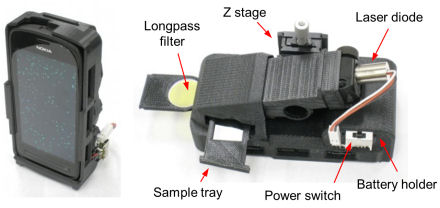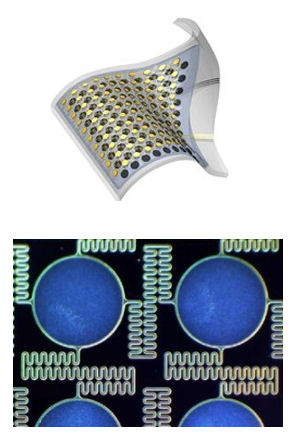
The Japanese researchers behind an innovative laser spark plug system say it will improve fuel economy and reduce emissions of nitrogen oxides, the major components of smog. Importantly, the new laser system is made from ceramics, and can be produced inexpensively in large volumes. The research will be presented at the upcoming Conference on Lasers and Electro Optics in Baltimore.
Traditional spark plugs work by sending small, high-voltage electrical sparks across a gap between two metal electrodes. The spark ignites the air-fuel mixture in the engine’s cylinder, producing a controlled explosion that forces the piston down to the bottom of the cylinder, generating the mechanical work needed to move the vehicle.
Nitrogen oxides are a byproduct of combustion and auto engineers have strived to create engines that can burn leaner mixes of air and fuel to reduce these emissions. Existing spark plugs can ignite leaner fuel mixtures, but only by increasing spark energy. Unfortunately, high voltages erode spark plug electrodes very quickly, making them unviable. By contrast, lasers, which ignite the air-fuel mixture with concentrated optical energy, have no electrodes and are not affected.
Lead researcher Takunori Taira, of Japan’s National Institutes of Natural Sciences, said that lasers also improve efficiency. Conventional spark plugs sit on top of the cylinder and only ignite the air-fuel mixture close to them. The relatively cold metal of nearby electrodes and cylinder walls absorbs heat from the explosion, quenching the flame front just as it starts to expand.
Lasers, Taira explains, can focus their beams directly into the center of the mixture. Without quenching, the flame front expands more symmetrically and up to three times faster than those produced by spark plugs.
Additionally, lasers inject their energy within nanoseconds, compared with milliseconds for spark plugs. “Timing – quick combustion – is very important. The more precise the timing, the more efficient the combustion and the better the fuel economy,” he says.
Until now, size has always been the issue in creating lasers powerful enough to do the job. To ignite combustion, a laser must focus light to approximately 100 gigawatts per square centimeter with short pulses of more than 10 millijoules each.
“Lasers that could meet those requirements were limited to basic research because they were big, inefficient, and unstable,” Taira says. The research team overcame this problem by making composite lasers from ceramic powders. The team heats the powders to fuse them into optically transparent solids and embeds metal ions in them to tune their properties.
Working with DENSO Corporation, a member of the Toyota Group, the team is now at work on a three-beam laser that will enable even faster and more uniform combustion.
Related:
Deep oil reserves created without organic matter?
Ethanol Vehicles A Health Hazard
Bioethanol’s water requirements underestimated
Taking The Heat Off Inefficient Engines








Comments are closed.